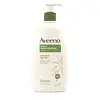What's inside
What's inside
 Key Ingredients
Key Ingredients

No key ingredients
 Benefits
Benefits

 Concerns
Concerns

 Ingredients Side-by-side
Ingredients Side-by-side

Water
Skin ConditioningIsopropyl Myristate
EmollientCetearyl Ethylhexanoate
EmollientGlycerin
HumectantSorbitan Sesquioleate
EmulsifyingCyclopentasiloxane
EmollientMagnesium Sulfate
Polyglyceryl-3 Ricinoleate
EmulsifyingPropylene Glycol
HumectantGoat Milk Extract
Lactobacillus
Skin ConditioningCyclodextrin
AbsorbentCera Microcristallina
Emulsion StabilisingSodium Benzoate
Masking2-Bromo-2-Nitropropane-1,3-Diol
PreservativeParfum
MaskingLinalool
PerfumingButylphenyl Methylpropional
PerfumingCitronellol
PerfumingHexyl Cinnamal
PerfumingGeraniol
PerfumingEugenol
PerfumingBenzyl Salicylate
PerfumingAlpha-Isomethyl Ionone
PerfumingCoumarin
PerfumingLimonene
PerfumingCitric Acid
BufferingWater, Isopropyl Myristate, Cetearyl Ethylhexanoate, Glycerin, Sorbitan Sesquioleate, Cyclopentasiloxane, Magnesium Sulfate, Polyglyceryl-3 Ricinoleate, Propylene Glycol, Goat Milk Extract, Lactobacillus, Cyclodextrin, Cera Microcristallina, Sodium Benzoate, 2-Bromo-2-Nitropropane-1,3-Diol, Parfum, Linalool, Butylphenyl Methylpropional, Citronellol, Hexyl Cinnamal, Geraniol, Eugenol, Benzyl Salicylate, Alpha-Isomethyl Ionone, Coumarin, Limonene, Citric Acid
 Reviews
Reviews

Ingredients Explained
These ingredients are found in both products.
Ingredients higher up in an ingredient list are typically present in a larger amount.
Glycerin is already naturally found in your skin. It helps moisturize and protect your skin.
A study from 2016 found glycerin to be more effective as a humectant than AHAs and hyaluronic acid.
As a humectant, it helps the skin stay hydrated by pulling moisture to your skin. The low molecular weight of glycerin allows it to pull moisture into the deeper layers of your skin.
Hydrated skin improves your skin barrier; Your skin barrier helps protect against irritants and bacteria.
Glycerin has also been found to have antimicrobial and antiviral properties. Due to these properties, glycerin is often used in wound and burn treatments.
In cosmetics, glycerin is usually derived from plants such as soybean or palm. However, it can also be sourced from animals, such as tallow or animal fat.
This ingredient is organic, colorless, odorless, and non-toxic.
Glycerin is the name for this ingredient in American English. British English uses Glycerol/Glycerine.
Learn more about GlycerinWater. It's the most common cosmetic ingredient of all. You'll usually see it at the top of ingredient lists, meaning that it makes up the largest part of the product.
So why is it so popular? Water most often acts as a solvent - this means that it helps dissolve other ingredients into the formulation.
You'll also recognize water as that liquid we all need to stay alive. If you see this, drink a glass of water. Stay hydrated!
Learn more about Water